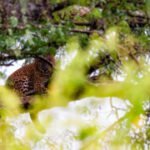
Zambia Travel
Travel South Luangwa in Zambia
It is a jewel of wildlife travel in Zambia and also our most favorite African safari destination. The park has year-round access and is known for its high concentration of wildlife. There are over 60 different animal species and over 400 bird species. The Luangwa River has the highest concentration of hippos and crocodiles in the region, and the South Luangwa National Park is known as one of the best places to spot the elusive leopard. Mfuwe village is on the eastern boundary of the park, and has an airport with connecting flights from the capital city of Lusaka.
Activities in Zambia Travel
You can go on a morning and Night Game Drive in the South Luangwa National Park, when you travel to Zambia. You can also opt for a full-day drive in a far remote surroundings. The morning safari starts around 06.00, just after a light breakfast at sunrise for around 4 hours. In the afternoon, our professional guide will take you into the park at 16.00 with a spotter who will use a powerful spotlight after sunset to locate nocturnal animals. After the sun-downer, we’ll continue the Night Safari with the spotlight. Our expert spotter can tell what kind of animal we are dealing with by the eye’s colour, blinking, or height from the ground up. If we’re lucky, we might witness a hunt too, or at the least the pride of lions on the prowl. All game drives are conducted in open safari vehicles to fully experience the surroundings. More adventurous, and above 12 years old can take part in Walking Safari for which South Luangwa is famous in whole Africa.
Below is a sample itinerary of 3 nights, additional nights are usually a repeat, according to your choice of day 2 or day 3.
With the highest density on the continent, South Luangwa NP is a heaven for viewing this magnificent cat when you travel to Zambia. Guests are regularly treated to multiple sightings in a single safari. The destination has another added advantage, the night safaris from Sunset until around 8pm when the leopards are the most active and hunting.

Southern carmine bee-eaters
South Luangwa National Park is famous for its colonies of brightly coloured southern Carmine bee-eaters. This bee-eater is a summer visitor to Zambia, arriving in large numbers in late August and early September to choose a nesting site on the steep sandy banks of the Luangwa River.
The southern carmine bee-eaters, like the great wildebeest migration, follow a yearly migration route, residing in Zambia, Zimbabwe, and Botswana from August to November. From March to August, they fly to their southernmost homes in South Africa, before returning north to the lush rainforests of equatorial Africa.
Carmine colonies draw attention to themselves with their brilliant colours and loud chirping. Burrows one to two metres deep are dug into dry riverbanks. A colony will occupy the same stretch of land, creating stunning displays as they emerge and exit their burrows.
They are experts at ‘hawking,’ a hunting strategy in which birds leap from a perch, seize an insect in mid-air, and then return to the same or a different perch. They are attracted to bushfires and will fly far above the flames, capturing insects that are flushed out of the burning foliage.
White fronted bee-eaters are occasionally seen in the same location.
Useful Information
-
- A headlamp and insect repellent is essential.
- After dark, you are not allowed to stay out of your room without accompanied by our guard, as the elephants and hippos are everywhere around the camp.
- We will provide wifi connection with an additional charge, but the network might not be that good.
- You can drink water directly from the tap, it is safe.
- If you have any dietary restriction, or you prefer not to have some items in your food, kindly let us know in advance.
- In each game drives, we will pack some light refreshments and tea/coffe/soft drinks/fruit juice. Rest of the drinks are on your own.

